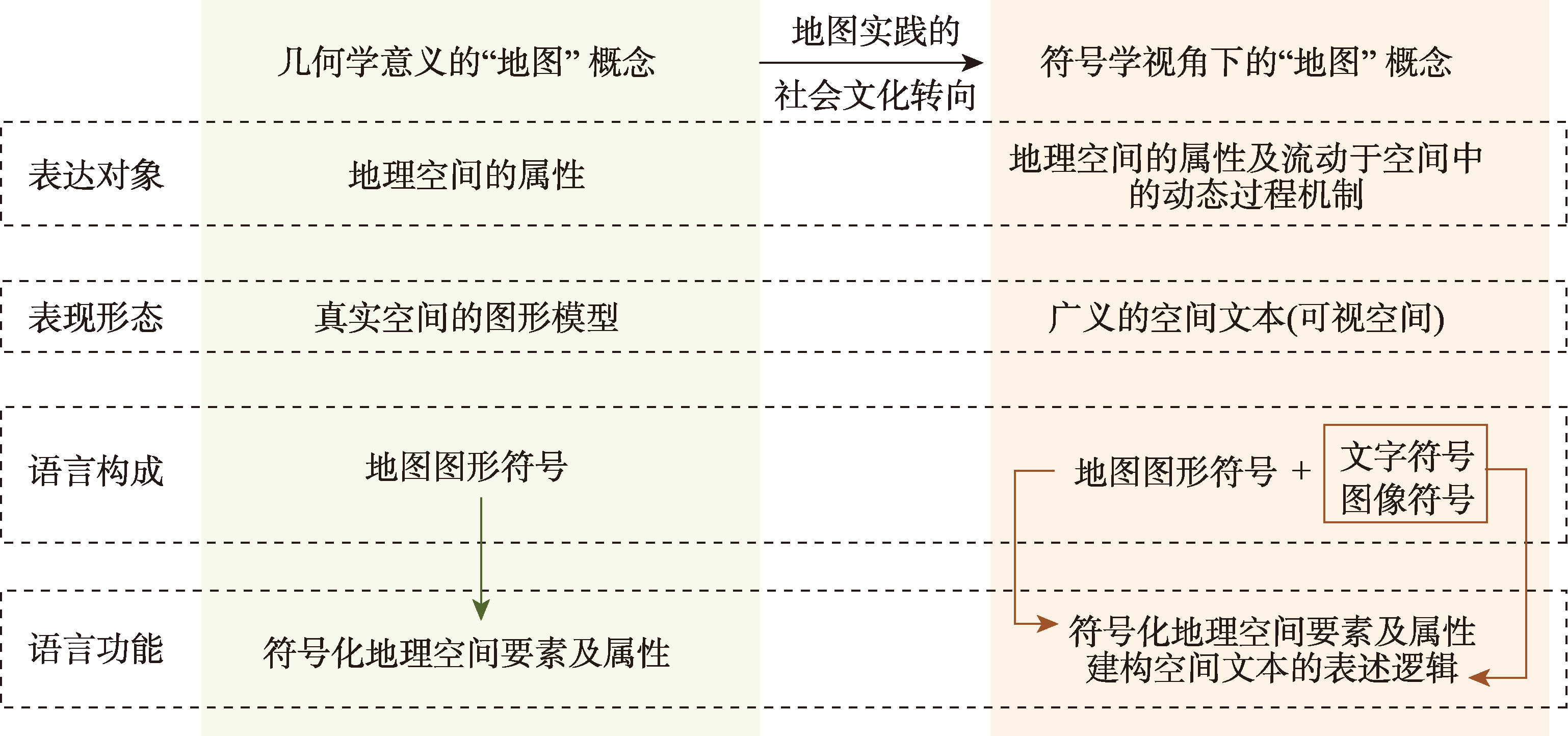

Journal of Geo-information Science >
Fundamental Theoretical Issues of Metaphorical Map
Received date: 2022-03-02
Revised date: 2022-04-08
Online published: 2024-03-26
Supported by
National Key Research and Development Programof China(2017YFB0503500)
As an integration of map and visual metaphor, metaphorical map has become a new means for cultural communication in the "Image Age". However, related studies are still in their infancy and the fundamental theoretical issues such as the conceptualization, generation mechanism, and discourse production principle remain underexplored. Most importantly, there exists no unified framework for metaphorical map design, which have substantially hindered the progress of theoretical innovation and practical application. Aiming to fill in these research gaps and taking the generative mechanism and discourse production principle as the breakthrough points, this paper first elaborates the concept of "map" from the perspective of semiotics, and on this basis defines the basic concept and connotation of metaphorical map from the lens of cognitive linguistics and identifies the two basic characteristics of metaphorical map, namely the figurativeness and polysemy. Second, we unravel the generation mechanism of metaphorical map -"similarity fusion - similarity highlighting - symbolization"- through clarifying the principle of visual metaphor. Third, we propose the symbolic fabric principle based on "syntagmatic relation - paradigmatic relation" and the semantic transfer principle of "point-generation" after clarifying the principle of discourse production of metaphorical map in reference to language semiotics. Finally, we construct a theoretical framework for the design of metaphorical map-“defining subject, choosing metaphor, and creating context”, and further demonstrate its rationality and operability with practical cases. This paper provides theoretical reference for the in-depth research and practical application of metaphorical map.

SU Shiliang , WANG Lingqi , DU Qingyun , ZHANG Jiangyue , KANG Mengjun , WENG Min . Fundamental Theoretical Issues of Metaphorical Map[J]. Journal of Geo-information Science, 2024 , 26(1) : 72 -84 . DOI: 10.12082/dqxxkx.2024.220090
| [1] |
|
| [2] |
|
| [3] |
|
| [4] |
苏世亮, 张江玥, 杜清运, 等. 历史文化风貌区叙事地图设计——可读性框架与表达策略[J]. 测绘科学, 2021, 46(10):194-201.
[
|
| [5] |
苏世亮, 王令琦, 杜清运, 等. 校园文化地图集设计——以《漫步珞珈地图集》为例[J]. 测绘科学, 2020, 45(12):153-160.
[
|
| [6] |
|
| [7] |
徐秋群. 隐秘的雌雄同体与隐喻的世界地图——《帖木儿大帝》的权力构建研究[J]. 外国文学研究, 2020, 42(3):87-98.
[
|
| [8] |
郭妍. 隐喻思维下的空间信息表达和可视化查询设计[D]. 武汉: 武汉大学, 2009.
[
|
| [9] |
艾廷华. 大数据驱动下的地图学发展[J]. 测绘地理信息, 2016, 41(2):1-7.
[
|
| [10] |
|
| [11] |
|
| [12] |
|
| [13] |
|
| [14] |
王家耀. 时空大数据时代的地图学[J]. 测绘学报, 2017, 46(10):1226-1237.
|
| [15] |
|
| [16] |
|
| [17] |
刘涛. 视觉修辞学[M]. 北京: 北京大学出版社, 2021.
[
|
| [18] |
|
| [19] |
|
| [20] |
|
| [21] |
郭仁忠, 陈业滨, 应申, 等. 三元空间下的泛地图可视化维度[J]. 武汉大学学报·信息科学版, 2018, 43(11):1603-1610.
[
|
| [22] |
|
| [23] |
|
| [24] |
|
| [25] |
|
| [26] |
|
| [27] |
陈中梅. (古希腊)亚里士多德:诗学[M]. 北京: 商务印书馆,1996.
[
|
| [28] |
|
| [29] |
|
| [30] |
|
| [31] |
|
| [32] |
|
| [33] |
索绪尔. 普通语言学教程[M]. 北京: 商务印书馆,1980.
[Saussure. The Course in General Linguistics[M]. Beijing: The Commercial Press, 1980.]
|
| [34] |
张德兴. 二十世纪西方美学经典文本(第一卷:世纪初的新声)[M]. 上海: 复旦大学出版社, 2000.
[
|
| [35] |
|
| [36] |
郭伟. 视觉隐喻研究[M]. 上海: 社会科学出版社, 2018.
[
|
| [37] |
|
| [38] |
|
| [39] |
赫伯特·里德. 现代艺术哲学[M]. 天津: 百花文艺出版社,1999.
[
|
| [40] |
|
| [41] |
|
/
| 〈 |
|
〉 |